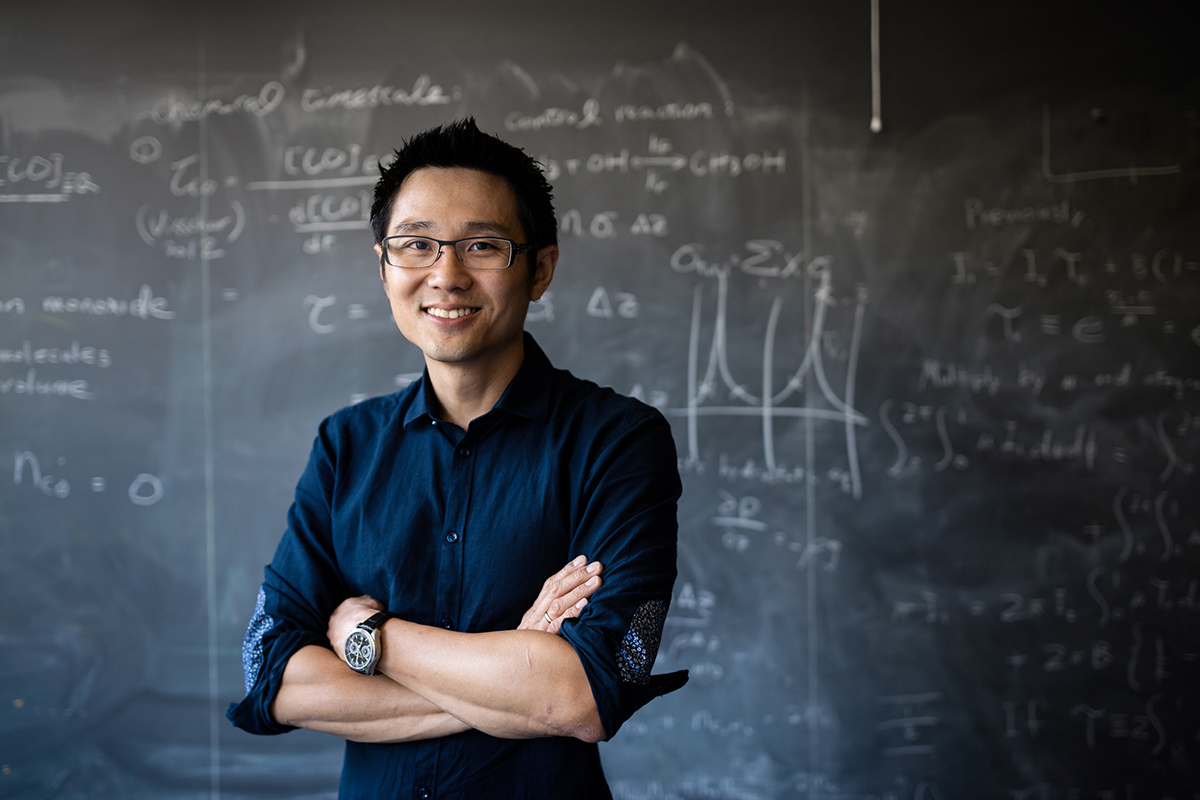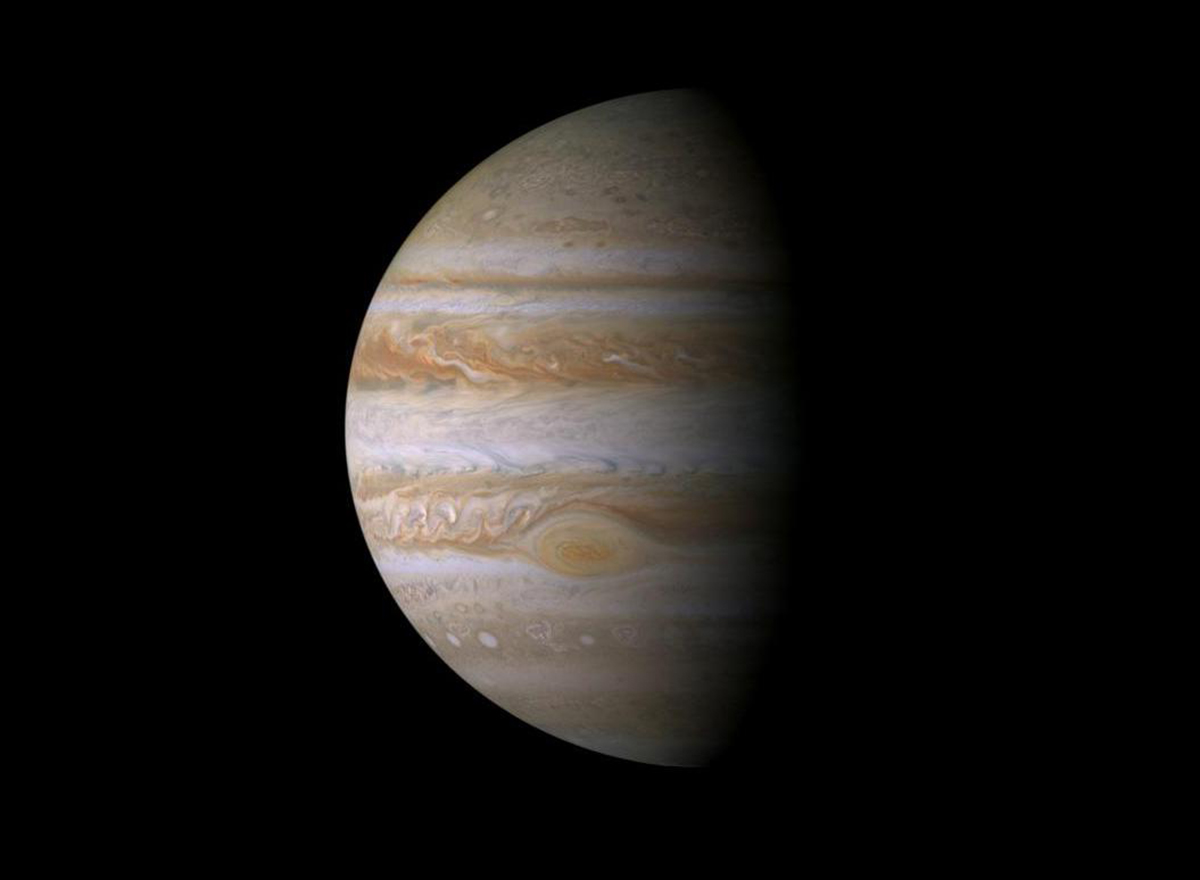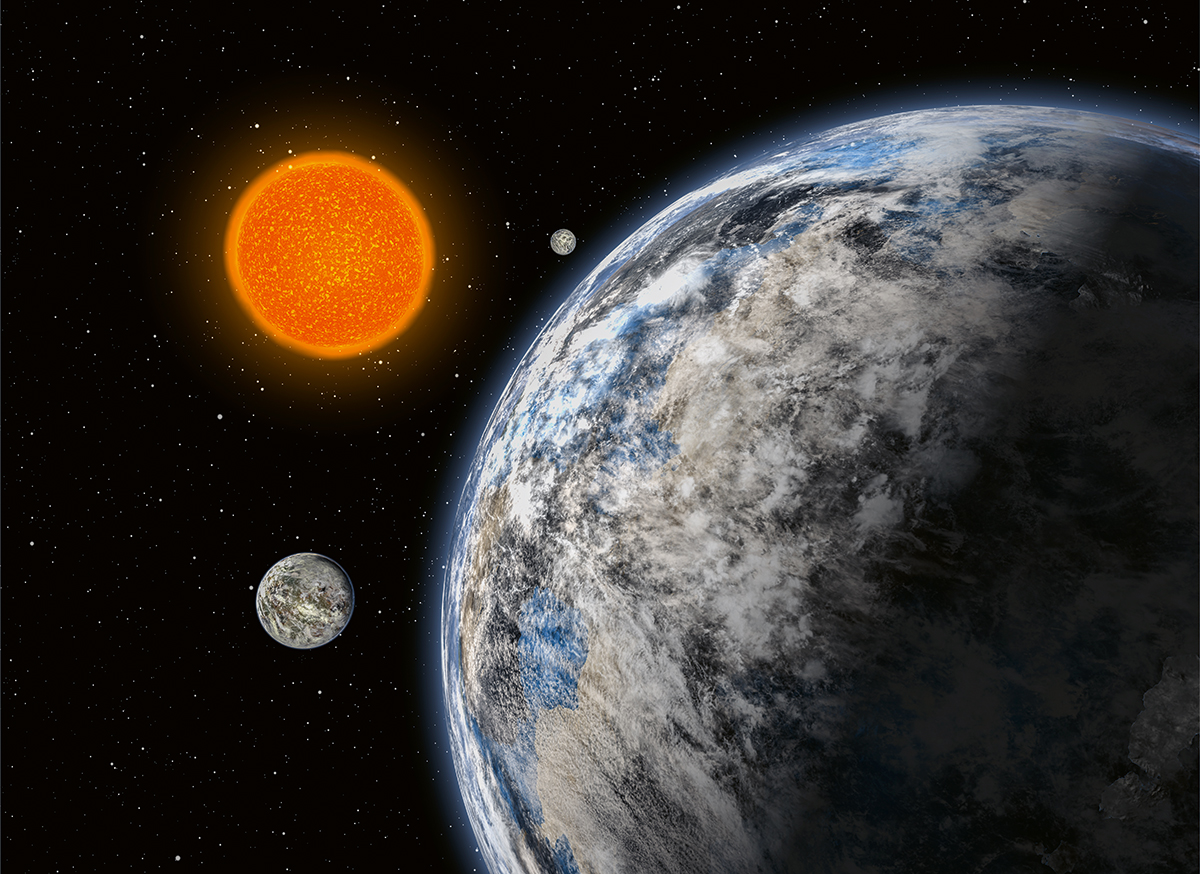The astrophysicist who achieved a rare feat
As a child, Kevin Heng wanted to become an astronaut. Today, he is the director of the Center for Space and Habitability (CSH) and has recently discovered new mathematical solutions that help solve a century-old problem in astronomy. In this interview, the astrophysicist talks about his career and what motivates him.

Kevin Heng: I believe that the discovery of these solutions will have several implications. First of all, you do not even need a computer to solve these solutions and data can be analyzed within seconds. Since this process is so much faster now, we have been able to analyze, for instance, data from Jupiter which had been collected by the Cassini spacecraft in the early 2000s – an analysis that has been forgone until now because it would have been extremely time-consuming. We have now been able to gain new insights into the properties of clouds in Jupiter's atmosphere thanks to the application of the solutions. Probably, the solutions will find their way into future standard textbooks.

Like all other kids, I first wanted to become an astronaut. After I realized that few people are as gifted and lucky as Claude Nicollier, I realized that this was not going to happen. So, I decided that becoming an astrophysicist was just as good. But more seriously speaking, I am attracted to astrophysics because it really allows us to ask big, old questions about the world such as “where did we come from?” and “which is our place in the universe?”. I think we have been asking these questions since human beings existed on Earth, and we will continue asking these questions until we find the answers. It is very deeply ingrained in our psyche as human beings. What is more, science is a method rather than a belief system. I believe very strongly in this – it is ironic that I use the word believe – because I think science allows us to focus on what is being said and what the evidence is or is not, rather than to focus on who says it and how. This is not something I talk about very often, but as someone who obviously belongs to an ethnic minority I often find – both in social and professional situations – that this is a very refreshing way of looking at the world.
Since the dream of becoming an astronaut, you have achieved a lot. How did you come to the University of Bern?The short answer is that I had arrived at ETH Zurich as a so-called Zwicky Prize Fellow. This was following a stint in Princeton. While I was at ETH Zurich and pondering my future career options a tenure-track assistant professorship at the University of Bern opened up and I applied. And to my great delight, I was on the shortlist and got an offer, which I gladly accepted. So, it was an easy decision.
And why did you stay in Bern?There are many things to say! Briefly saying, the University of Bern has a fantastic location, basically right in the middle of Switzerland. It gives the University of Bern a tremendous potential for forming deep, long-lasting, interdisciplinary, international research collaborations with other European universities – something that I am trying to exploit as the Head of the Center for Space and Habitability (CSH). I truly enjoy and appreciate the academic freedom, that has been afforded to me. This has actually allowed me to produce my best work while being at the University of Bern. And I really also appreciate the trust that the University Executive Board has in handing me the reins as CSH Director.
You will leave the University of Bern next year for Munich and take up a chair at Ludwig Maximilian University from August 2022. Does your departure from Bern have anything to do with Switzerland's non-association with the EU's Horizon Europe research program?No, my decision was completely independent of the Horizon Europe development. LMU had been in discussions with me for several years and they eventually made me an unsolicited, once-in-a-lifetime offer to join them as their inaugural chair professor (Lehrstuhlinhaber) of exoplanet science..
Which is your main research area today?II investigate the atmospheres of exoplanets, which are faraway planets orbiting other stars. This may sound very exotic but the reason why I do this is because we have no way of travelling to these exoplanets – they are too far away – and the only way to understand them beyond how big they are and how much mass they have, is to examine their atmospheres. This allows us to ask questions such as whether there is evidence of life on an exoplanet.
Which questions are driving you today?One question which is currently very much on my mind is: Why does our Solar System not have planets that are in between the size of Earth and Neptune? Because astronomers are finding that these exoplanets that are in between the size of Earth and Neptune are actually very common. They are either called “super-Earths” – they are slightly bigger than Earth – or they are called “mini-Neptunes” as they are slightly smaller than Neptune. We have no example of these in our solar system – none at all. So, we are asking very basic questions like “What are they made of?”, “Are they chemically diverse?”, “Do they look like our Neptune?”, “Do they look like our Jupiter?”. These objects are still an almost complete mystery. I think that within the next five years we will make enormous progress in exoplanet research on these questions..

I really hope to continue to innovate and evolve as a researcher, because it is now abundantly clear to me at least that, if you want to do world-class research in exoplanets, one has to learn from and work with people who are not astrophysicists. Specifically, geochemists, geophysicists, biochemists or even experts from the medical field. Didier Queloz, who is moving to ETH Zurich to become the founding director of an institute similar to the CSH, shares the same belief. Bern has a rich track record in these fields. In conversations with other researchers, one can then develop groundbreaking new approaches, for example, to data analysis. In general, I hope to be in a constant state of innovation because research is really not a 9-to-5 job and I hope that this will also inspire the researchers around me to do the same.
Media Release
New Mathematical Solutions to An Old Problem in Astronomy
The Bernese theoretical astrophysicist Kevin Heng has achieved a rare feat: On paper, he has derived novel solutions to an old mathematical problem needed to calculate light reflections from planets and moons. Now, data can be interpreted in a simple way to understand planetary atmospheres, for example. The new formulae will likely be incorporated into future textbooks.
Kevin Heng
Kevin Heng is Professor of Astrophysics and has been Director of the Center for Space and Habitability (CSH) at the University of Bern since 2016. He studied physics and astrophysics at the National University of Singapore and at the University of Colorado in Boulder. In 2007 he received his PhD from the JILA Research Institute and the University of Colorado at Boulder. Other posts were Princeton University and ETH Zurich before he took up a tenure-track assistant professorship at the University of Bern in 2013. Kevin Heng's main research interest is the atmospheres of exoplanets. He is a member of the Core Science Team for the CHEOPS mission led by the University of Bern and of the National Centre of Competence in Research NCCR PlanetS, which the University of Bern is leading together with the University of Geneva.
Contact:
Prof. Dr. Kevin Heng
Center for Space and Habitability (CSH)
Telephone: +41 31 631 59 18
Email: kevin.heng@csh.unibe.ch
On Twitter you can find him under @KevinHeng1.
Center for Space and Habitability (CSH)
The mission of the Center for Space and Habitability (CSH) is to foster dialogue and interactions between the various scientific disciplines interested in the formation, detection and characterization of other worlds within and beyond the Solar System, the search for life elsewhere in the Universe, and its implications for disciplines outside of the sciences. The members, affiliates and collaborators include astronomers, astrophysicists and astrochemists, atmospheric, climate and planetary scientists, geologists and geophysicists, biochemists and philosophers. The CSH is home to the CSH and Bernoulli Fellowships, which host young, dynamic and talented researchers from all over the world to conduct independent research. It actively run a series of programs to stimulate interdisciplinary research within the University of Bern including collaborations and/or open dialogue with Medicine, Philosophy and Theology. The CSH has an active tie to the Centre for Exoplanets & Habitability of the University of Warwick. It is active in implementing gender equality measures and public outreach.
More informationen: https://www.csh.unibe.ch/
Bernese space exploration: With the world’s elite since the first moon landing
When the second man, "Buzz" Aldrin, stepped out of the lunar module on July 21, 1969, the first task he did was to set up the Bernese Solar Wind Composition experiment (SWC) also known as the “solar wind sail” by planting it in the ground of the moon, even before the American flag. This experiment, which was planned and the results analysed by Prof. Dr. Johannes Geiss and his team from the Physics Institute of the University of Bern, was the first great highlight in the history of Bernese space exploration.
Ever since Bernese space exploration has been among the world’s elite, and the University of Bern has been participating in space missions of the major space organizations, such as ESA, NASA, ROSCOSMOS and JAXA. With CHEOPS the University of Bern shares responsibility with ESA for a whole mission. In addition, Bernese researchers are among the world leaders when it comes to models and simulations of the formation and development of planets.
The successful work of the Department of Space Research and Planetary Sciences (WP) from the Physics Institute of the University of Bern was consolidated by the foundation of a university competence center, the Center for Space and Habitability (CSH). The Swiss National Fund also awarded the University of Bern the National Center of Competence in Research (NCCR) PlanetS, which it manages together with the University of Geneva.
About the author
Brigit Bucher is Head of Media Relations and the "Space" representative at the University of Bern Communication & Marketing Department.